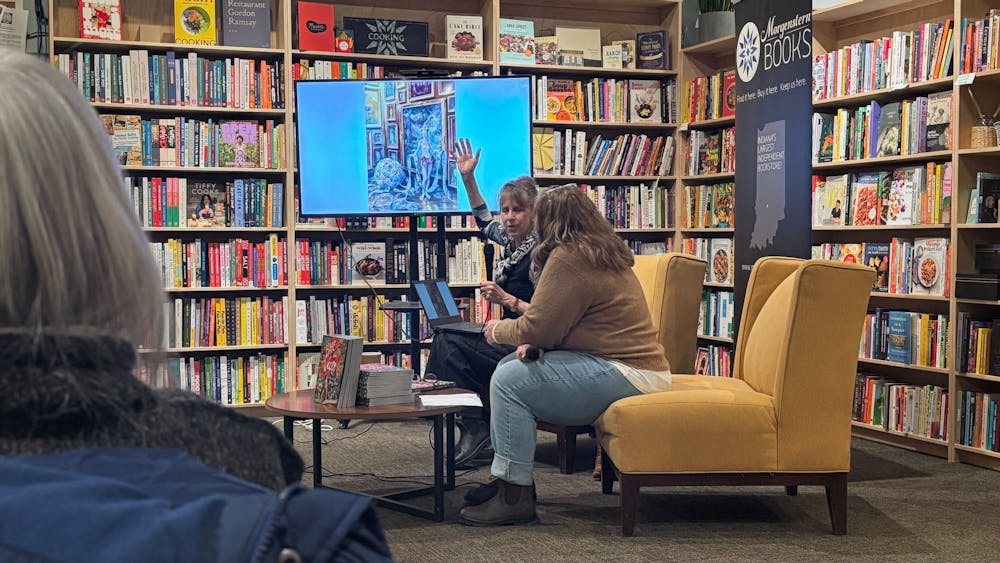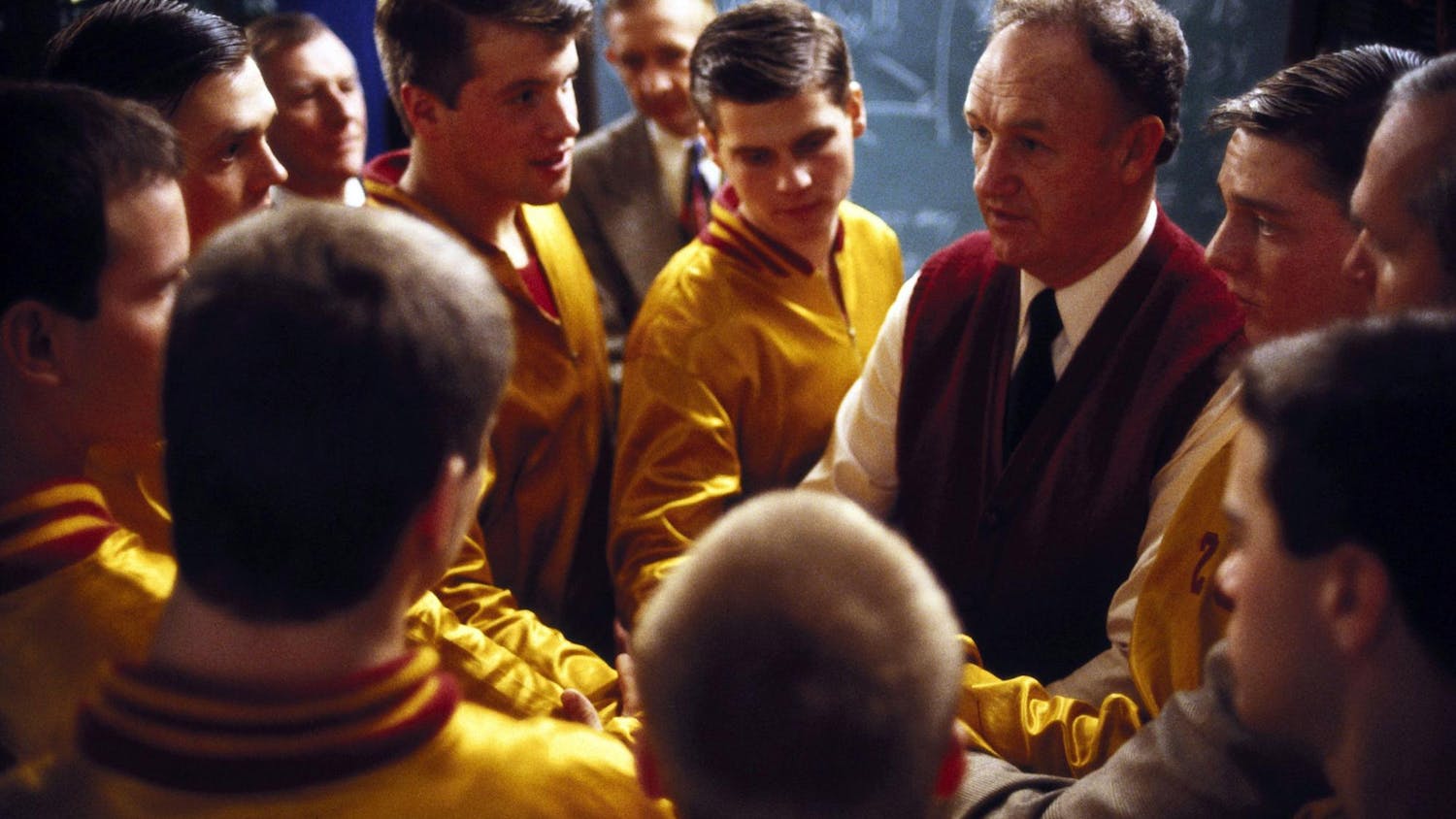Julie Heffernan, an acclaimed American painter, visited Morgenstern’s Bookstore and Café for a public book talk event Wednesday to discuss her debut graphic novel, “Babe in the Woods, or the Art of Getting Lost.”
Heffernan grew up in California and earned a bachelor’s degree in fine arts in printmaking and painting from the University of California, Santa Cruz. Following this, she completed a master’s degree in fine arts at the Yale School of Art.
She is currently professor of fine arts at Montclair State University, where she has worked since 1997, and is a co-founder of the journal Painters on Paintings. She lives and works in Brooklyn, New York. Her work has been described by The New Yorker as “ironic rococo surrealism with a social-satirical twist.” and has been featured prominently in over 50 solo exhibitions across the world since 1999
During a recent sabbatical, Heffernan decided to try her hand at graphic novels, which eventually materialized into “Babe in the Woods” and was published Sept. 3, 2024.
She started the event at Morgenstern’s with an introduction and spoke about her main reasons for starting the book.
“I discovered on my own (during art history class) that there is this incredible wisdom in these great works of art that were never talked about,” she said. “Great paintings are not to be ignored. They’re here to give us profound wisdom if we can read it, and how to read it is to look closely.”
The four-color graphic novel is an autofiction about a young artist named Julie who decides to go for a hike and climb a mountain with her infant son slung around her. During this perilous journey, she gets lost on the way down and navigates a surreal adventure through her own tangled past.
“(It’s a) pretext for the character to think about all the things she hasn’t worked through now that she’s a mother,” Heffernan said. “It’s really important to have clarity about how you’re going to foster a child through this world.”
Heffernan said what she loved about the graphic novel medium was how one could manifest and clearly depict the way people think through the speech bubbles, something that can only be inferred in the linearity of a novel.
She further delved into how a graphic novel requires more concise wording and likened the experience of reading it to being in a long conversation. She compared the conflation of the foreground, middle ground and background to being in a film happening in space rather than linear time.
Heffernan took the audience through a series of slides containing artworks from her book and explained how she used iconography and symbolism in each of them to augment the story beyond words.
“One of the things I tell my students is (that) a painting should be made to be looked at forever, and so these pages became almost a little bit of that,” she said. “Something you could not just turn the page on but keep looking at.”
One such artwork was a depiction prior to the Massacre of the Innocents and Heffernan explained how the realm in the artwork was divided into two parts with the top half representing the kingly authority and the lower half featuring the onlookers, providing an immediate notion of power. The top half was painted with lapis lazuli, an expensive blue pigment typically used to represent heaven, and contained two contrasting figures — Herod's hand, deriving from the divine the right to kill, and a baby's hand up in the heavenly realm saying, God help me.
“It's this beautiful way of getting to the nub of what it is to be helpless and what it is to invoke the divine, and how it can be abused and how it can be ignored, but there it always is,” she said. “So, the book initially was an opportunity to use these great paintings that I call wisdom delivery systems.”
Heffernan spoke about her Catholic upbringing, drawing her artistic inspiration from Christian paintings, symbols and ideologies.
“I was brought up Catholic, very Catholic. And, of course, my goodness, you have to reject it at a point,” she said. “But I think what I've learned is how deeply, deeply it affected me, and I'm grateful for that.”
The session was interactive, with the attendees around her asking questions and expressing their opinions.
Kelly Jordan, who studied painting at IU, was thrilled to see Heffernan come to Bloomington to talk about her book.
“It was wonderful to hear her talk about the transition from being a painter to making a graphic novel,” she said. “She was warm and open and shared so many great things that I need to learn more about.”
Gary Pruett, another attendee, was in town and decided to check out the event without knowing what to expect.
“I learned so much,” Pruett said. “She answered questions that accumulated over a lifetime about how artists communicate, how they tell their stories and be concise and efficient with words.”
The event concluded with a book signing.
Heffernan will talk more about her book as part of the Eskenazi School of Art, Architecture & Design’s McKinney Visiting Artist Series in the Fine Arts building this Friday 5 p.m.
“Babe in the Woods, or the Art of Getting Lost” can be purchased at Morgenstern’s for $28.99.




